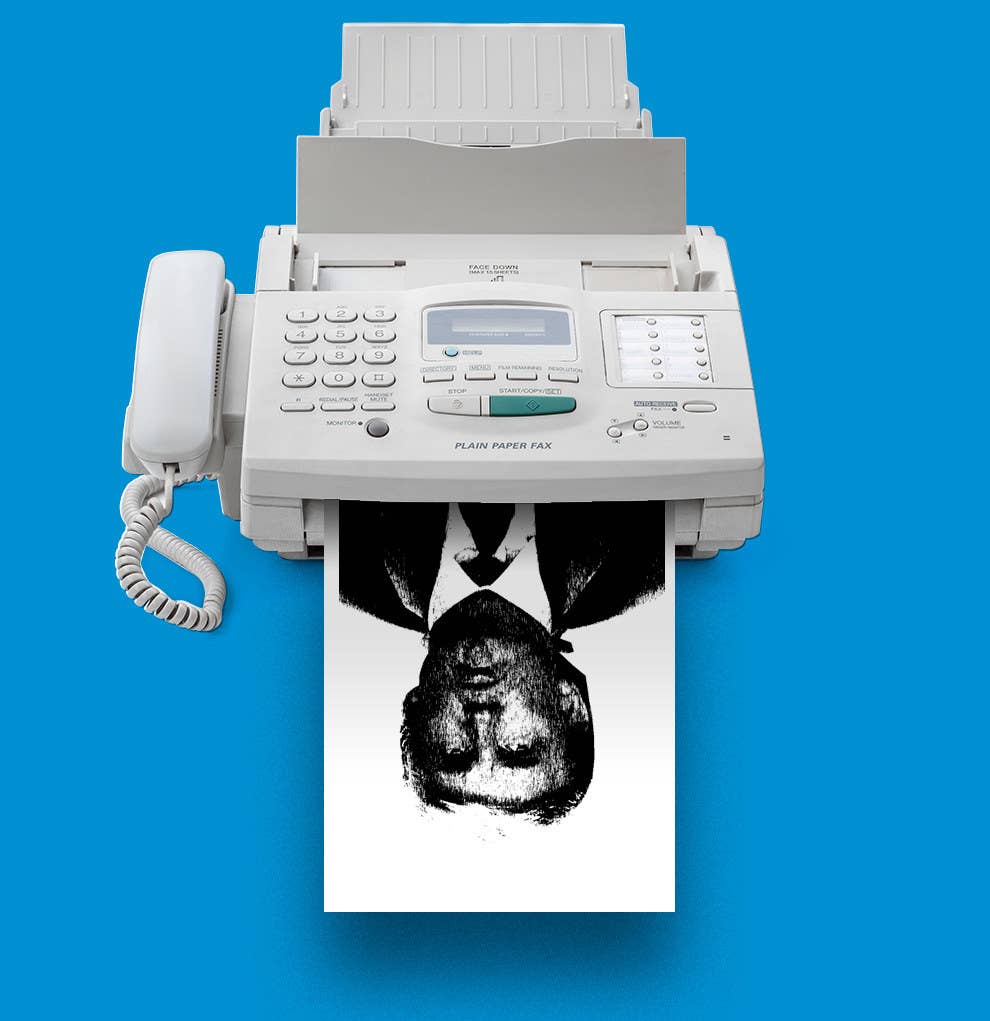
Here is a partial list of the things that happened to Donald Trump in 1999: 1) He finalized his divorce from second wife Marla Maples, managing to give her just $2 million; 2) he became embroiled in battle with a coalition of Upper West Side residents — including Walter Cronkite, Paul Newman, and Kofi Annan — protesting the construction of a massive tower near the United Nations building; 3) he announced plans for at least a half dozen new real estate developments, including a NASCAR track on Long Island; 4) he starred in a sensational gossip saga in which two former girlfriends vied for his attention in the Hamptons, both ending the night in tears; 5) he reveled in the rejuvenation of the Miss USA Pageant, and the news that he would start a modeling agency; 6) he began dating Slovenian model Melania Knauss; 7) he spent months flirting with a run for president.
That flirtation started with an “independent” midsummer poll of Reform Party members indicating that Trump would tie for third among the party’s potential candidates. “If the Reform Party nominated me, I would probably run and probably win,” Trump said. And if they did, he joked, “I would ask for an immediate recount.”
But the poll was enough to spark Trump’s interest — and get Jesse Ventura, professional wrestler turned Reform Party governor of Minnesota, to encourage Trump to contest Ross Perot and Pat Buchanan for the Reform Party nomination.
Two weeks later, the National Enquirer published a similar “poll shocker”: “The 2000 presidential election is neck and neck,” the piece, placed prominently on the front page of the magazine, announced. “But sorry, Al Gore, the real battle is between George W. Bush and Donald Trump!” Thirty-nine percent of those polled said they’d vote for Bush — but 37% percent said they’d vote for Trump, “who hasn’t bothered to campaign at all.” “I am so sick of politicians and Washington,” said Carol Sue Chamberlain, age 65. “Trump makes things happen and he is at home with the guy on the street. He’s the only one I have faith in!”
No matter that the Enquirer poll surveyed just 100 Americans, and lacked any scientific methodology — it was enough to make Trump take the idea of a run for the presidency seriously. “Those are the real people,” Trump told the New York Times. “That is the Trump constituency,” his adviser, Roger Stone, added.
Over the months to come, Trump’s potential candidacy would be grouped with what Newsweek called “the wild bunch,” a group of political outsiders, all considering runs for president, that included Arnold Schwarzenegger, Warren Beatty, Cybill Shepherd, and Ventura himself. Celebrity candidates offered shiny alternatives to the leading parties, both of whom seemed to have already settled on establishment candidates: Al Gore, with “the weakest claim on outsider status of any presidential candidate since Walter Mondale,” was the clear favorite. The Republicans had Bush, “who is, by name and upbringing, about as establishment as they come.”
In 1999, there was already a mass of (primarily white) disenchanted voters who wanted something other than politics as usual — something that Trump, under the banner of the Reform Party, seemed poised to provide. But those voters weren’t quite disenchanted or numerous enough to form a viable voting bloc, and Trump had not yet honed in on the best way to inflame their most deeply felt disappointments. It would take the election of an establishment conservative (Bush) and the perceived failure of a progressive reformer (Obama) to allow the fear and frustration of many Americans to feed on itself, fester, and eventually propel Trump to a presidential victory in 2016 that seemed to surprise even him.
In the meantime, Trump as a candidate — his tactics, his hodgepodge ideology, his image as an iconoclastic distillation of the American dream — largely remained the same. But instead of attempting to run as a third-party candidate the second time around (which, Trump realized, would quickly render him a loser), he simply colonized the main-party ticket that could make him a winner.
In 1999, Trump never even officially declared a presidential run. But he did lay out the roadmap to his 2015 campaign, for anyone with eyes — and newspaper archive access — to see. It turned out that Trump’s past, like the nation’s, was not past at all: It was just waiting for oxygen.
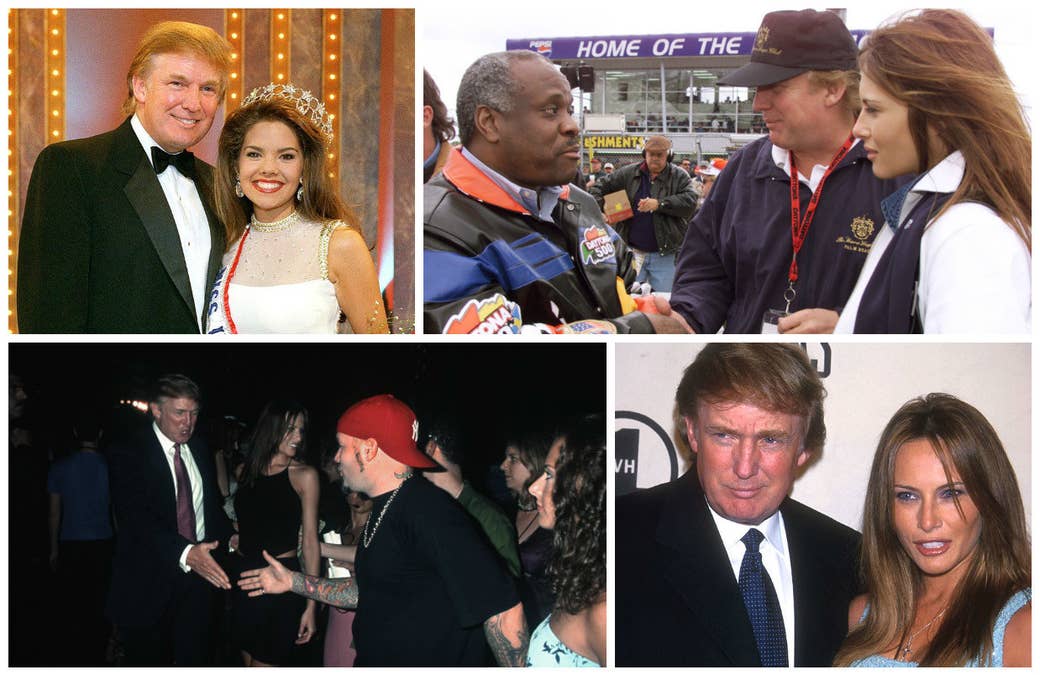
Trump’s every move is a business move, and the moves of 1999 were no different. Everything he did publicly was calculated to bolster his image, which was still recovering from the decline, overexposure, and general scandal inflicted by the events of the early ’90s. The story of the women vying for his attention, spread across the New York tabloids, underlined his virility as he neared middle age. The fight with, and eventual triumph over, Cronkite, Newman, and Annan (embodiments of journalism, the arts, and global harmony) highlighted his invincibility in the face of a certain flavor of liberal activism.
The NASCAR development never came to pass, but much like his casinos, his beauty pageants, and his modeling agency, it showed that he was in touch with what regular people actually wanted: speed, money, and beautiful women. And by ensuring that Maples received just a sliver of his fortune, he showed that no woman could compromise him.
As for the run for the presidency, it proved that he was someone whose ideas, not just his deals, or women, or hair, were to be taken seriously — or at least seriously enough that people would buy his book, The America We Deserve, which was released in the early months of 2000. Just three years later, reality producer Mark Burnett would package the fascination with Trump’s ideas (and wealth, and general celebrity) into The Apprentice, making him a household name for a new generation of Americans who were too young to remember The Art of the Deal and the Ivana-Marla showdown.
Much like today, those ideas emerged piecemeal, a smattering of vague statements that gradually transformed into policy positions. In the beginning, Trump responded to the idea of a presidential run with uncharacteristic humility, mixed with trademark Trump self-promotion. “It’s so unlikely that you shouldn’t bother asking the question,” he told the New York Times in July 1999. “I’m honored and I’m flattered, but the fact is I’ve never had more fun than I’m having right now, building the most spectacular buildings in New York.” He then told the Times, in vintage Trump fashion, how obviously qualified he was for the job.
However presidential Trump considered himself, a run would have been out of the question without Jesse Ventura. Ventura first met Trump in the early ’90s, when Trump hosted a series of WWE competitions in his Atlantic City casino. In 1998, Ventura — running as a brazen outsider on the Reform ticket — had defeated both Republican Norm Coleman and Minnesota DFL candidate Skip Humphrey for the governorship of Minnesota, sailing in on a wave of Gen-X disenchantment.
Ventura seemed like the natural choice to succeed Ross Perot as the face of the Reform Party. In 1992, Perot had briefly led the presidential race as an independent candidate. A millionaire businessman with no political experience and little in the way of concrete policy positions, Perot channeled disenchantment with the political status quo into support, mostly from angry white people, that earned him 19% of the popular vote. But by the Reform Convention in July 1999, Perot had gone out of fashion.
“With Ventura, we’ve got oomph and energy, a regular guy who says it like it is,” the Rhode Island delegate told the Washington Post, “not a millionaire like Perot.” But Ventura was just a year into his term as governor, and couldn’t run. Thus, the hunt for “the Great Outsider”: “a candidate with instant name recognition, spiritual distance from anything Washington-related,” and what one delegate at the convention called “Jerry Springer excitement.”
Against this backdrop, it’s easy to see how the suggestion of Trump took hold: He combined the celebrity charisma of Ventura, the "angry businessman" energy of Perot, and the rabble-rousing outsiderness of both. Off the convention floor, as various groups floated the names of different celebrities they might compel to run under the Reform ticket, one group created a “Trump Tribune,” culling Trump quotes from the internet to make position papers for him. A rumor that Trump had promised $40 million of his own money to “save the Reform Party” began to circulate.
That’s when Trump first disavowed the rumors: “I don’t know anything about what’s happening,” he told the New York Times, from his plane, after the convention. “But I’m nevertheless greatly honored by all the hoopla for Trump.” (Trump had previously leaned into similar hoopla in 1987, when Republican Mike Dunbar spearheaded a “Draft Trump” campaign that led Trump to make his first political speech in New Hampshire.)
With the forthcoming release of his book, it made good business sense to tease the win: “Donald Trump for President?” a press release from his publisher said. “Run or not, Donald Trump’s ideas will have a major impact on the next presidential election.” Those ideas included the idea of success for all willing to work hard: “I am the American Dream, supersize version,” an excerpt of the book proclaimed. “I’m going to do everything I can to see that regular Americans can fly as high as their wings will take them.”
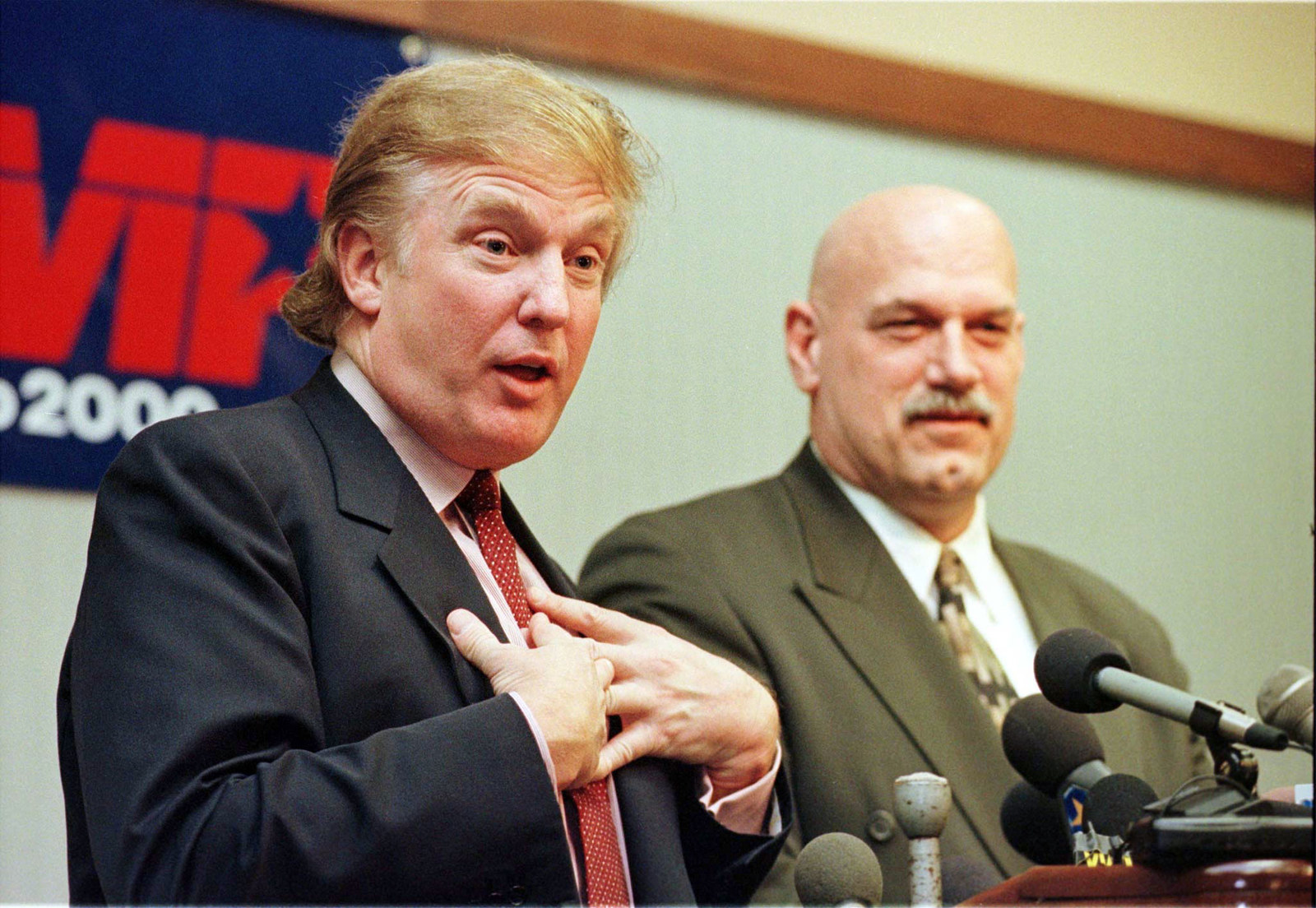
By mid-September, some mixture of polls and convention rumors, the news that a website founded by two Trump fans, thedonald2000.org, had reportedly attracted a million hits, and Trump’s ego had converged to make him seriously consider the benefits of a presidential run.
“Everyone wants me to run for president, and I have a lot of respect for Jesse and the job he has done,” Trump said on Sept. 13. But Ventura, who had recently said of Trump that he “seems to parallel me a lot,” was arguably less interested in Trump than in finding a candidate who could block Pat Buchanan, the erstwhile Republican who threatened to pull the Reform Party toward moral conservatism and good ol’ boy white supremacy.
Buchanan had a history of anti-Semitic statements but denied this reputation: “There’s not a trace of bigotry in my heart,” he told an interviewer on CNN. When Buchanan appeared on CBS’s Face the Nation on Sept. 22 to make a similar defense of his book, A Republic, Not an Empire: Reclaiming America’s Destiny, which suggested that America should not have intervened in World War II, Trump became so enraged that he faxed the show. “Pat Buchanan’s stated view that we should not have stopped Adolph [sic] Hitler is repugnant,” Trump wrote. “Buchanan denigrates the memory of those Americans who gave their lives in the Second World War in the effort to stop Hitler. I am proud of the vital role that the United States played in stopping Hitler. I think it is essential that someone challenge these extreme and outrageous views by Pat Buchanan.”
That someone, of course, was Trump — whose staff was already exploring the necessary paperwork to run for president. And faxing was Trump’s 1999 version of Twitter: less broad, less direct to his followers, but a way to insinuate himself into the conversation. It’s notable, however, that Trump didn’t out-and-out label Buchanan a bigot. Rather, he focused on suggesting that Buchanan had undervalued the sacrifices of the American troops. In this way, Trump massaged the egos of his potential voter base, while also creating a neat opposition between those who support America (Trump) and those who do not (Buchanan).
Four days later, controversial Washington Post columnist Richard Cohen amplified that contrast with an editorial titled “Trumping Buchanan.” Cohen opened the piece by describing Trump reading his mail, much of it from fans “thrilled” with the way he “blasted” Pat Buchanan. Cohen mentioned that the New York Times, in their description of the fax, noted Trump’s misspelling of Hitler’s first name — but his fans didn’t care. “Their Donald is not one to wait for editing.” Plus, Cohen wrote, “it is these little imperfections, anyway, that will make The Donald such a refreshing, if not strong, presidential candidate.”
You can see the outlines of Today’s Trump in this description: his performative acceptance of fan devotion, the irrelevance of the snobby New York Times, the spin of Trump’s mistakes as part of his “refreshing” appeal. Cohen ended his column with a semblance of a joke: “Is the country ready for The Donald as a presidential candidate? Probably not — but if the answer is yes, I will go along, uncomprehending, asking of him only a position or two and a single pledge: Keep your name off the White House.”
Cohen’s mixture of bemusement and support was one of a few overarching responses on the part of the press over the next few months. The second was to simply let Trump demonstrate his own lack of qualification for the role of president, quoting him at length in a bit of “show, don’t tell.”
Take this Times piece, written in a style that should now feel very familiar:
Mr. Trump disapproves of President Clinton’s behavior in the White House over the last four years, though he suggested that he was bothered less by what Mr. Clinton did than by whom he did it with. "It was his choice," Mr. Trump said. "It was Monica! I mean, terrible choice." Mr. Trump, who showed off fashion magazines displaying cover art of the latest in a line of models he has dated, suggested that if Mr. Clinton had confessed an improper relationship (Mr. Trump offered a more earthy phrase to get the idea across) with a supermodel, as opposed to a White House intern, "he would have been everybody’s hero."
This subtle approach plays, as we now know, to the sort of person who has already dismissed Trump as a candidate. It puts Trump on display as a sly joke, with anyone who’d take him seriously as the punchline. As the 2016 election has shown, the efficacy of this “show, don’t tell” approach is questionable — and shaming those who support Trump does little to sway them.
Maureen Dowd offered a version of this approach in an editorial that doubled as an interview: “To be blunt, people would vote for me,” Trump told her. “They just would. Maybe because I’m so good-looking. I don’t know.’” While Dowd goes on to declare that Trump is “pure id,” with “no trepidation, no guilt, no P.C. restraints" who, as one friend of his put it, “transmits, but doesn’t receive,” she doesn’t decry him. Instead, she declares that “in a landscape of black-and-white candidates, he’s Technicolor.”
Dowd — who’d been relentless in her criticism of the Clinton scandal — was so committed to the idea of allowing Trump to speak for himself that she ended the column with a list of Trump’s opinions on various individuals, including Buchanan (“He’s medieval”), Al Gore (Highly underrated”), Hillary Clinton (“The concept of the listening tour is ridiculous. People want ideas.”) and Tina Brown’s newly launched Talk (“The magazine looks terrible. Elizabeth Taylor on the cover? Crazy. At least they didn’t use a current picture of her.”).
Some journalists did take a possible Trump presidency seriously — or at least consider its implications. A Time profile highlighted his database of contact information, linked to past customers at his casinos, that “reads like a Democratic mailing list.” “They are black, Hispanic, Catholic, white working-class and mostly male,” said a Trump adviser. “They stay at our hotels. They play at our tables. They like his plane. They like his boat. They like his house. They like his girlfriends. They all love Trump.” Newsweek put an even finer point on Trump’s appeal, chiding readers to “keep an eye” on the candidate. “He has, as they say in the business these days, ‘a narrative.’” Trump “speaks in a clear, punchy style, and is the kind of business hero (like Lee Iacocca before him) who appeals to blue-collars and computer nerds alike.”
In 2016, Trump’s campaign would divide that broad, multi-ethnic demographic, exploiting white animosity (some of it working-class, some from the “computer nerd” online faction of Trump’s base, including the so-called alt-right) toward multiculturalism, writ large. But the crux of his appeal was there, even back in 1999, for anyone unblinded by casual snobbery to see. And over the next decade, Trump’s 6.5 million–strong mailing list would expand to include the millions who watched him on The Apprentice, further establishing him as the paragon of the American dream.
For those disquieted by Trump’s candidacy in 1999, however, the problem wasn’t Trump himself so much as the ever-expanding power of celebrity. Today, this argument seems almost quaint, but in the late ’90s, celebritization felt like a real threat: Between the Lewinsky scandal and the O.J. Simpson trial, the cult of JonBenét Ramsey and the death of Princess Diana, the fascination with celebrity wasn’t just “dumb” or “vapid” but dangerous. There was a general fatigue with — and genuine fear of — the way celebrities and scandal had overtaken the country’s news and politics. “Sign of the Apocalypse: Celebrity Candidates,” one San Jose Mercury editorial predicted. “Star-Stricken: America’s Cult of Personality Has Real Consequences,” declared another in the Saint Paul Pioneer Press. “Monument to Stupidity,” shouted the New York Daily News, “Talking About Buchanan, Trump, Beatty & Cybill Shepherd (!) As President Proves the Junkification of Our Politics.”
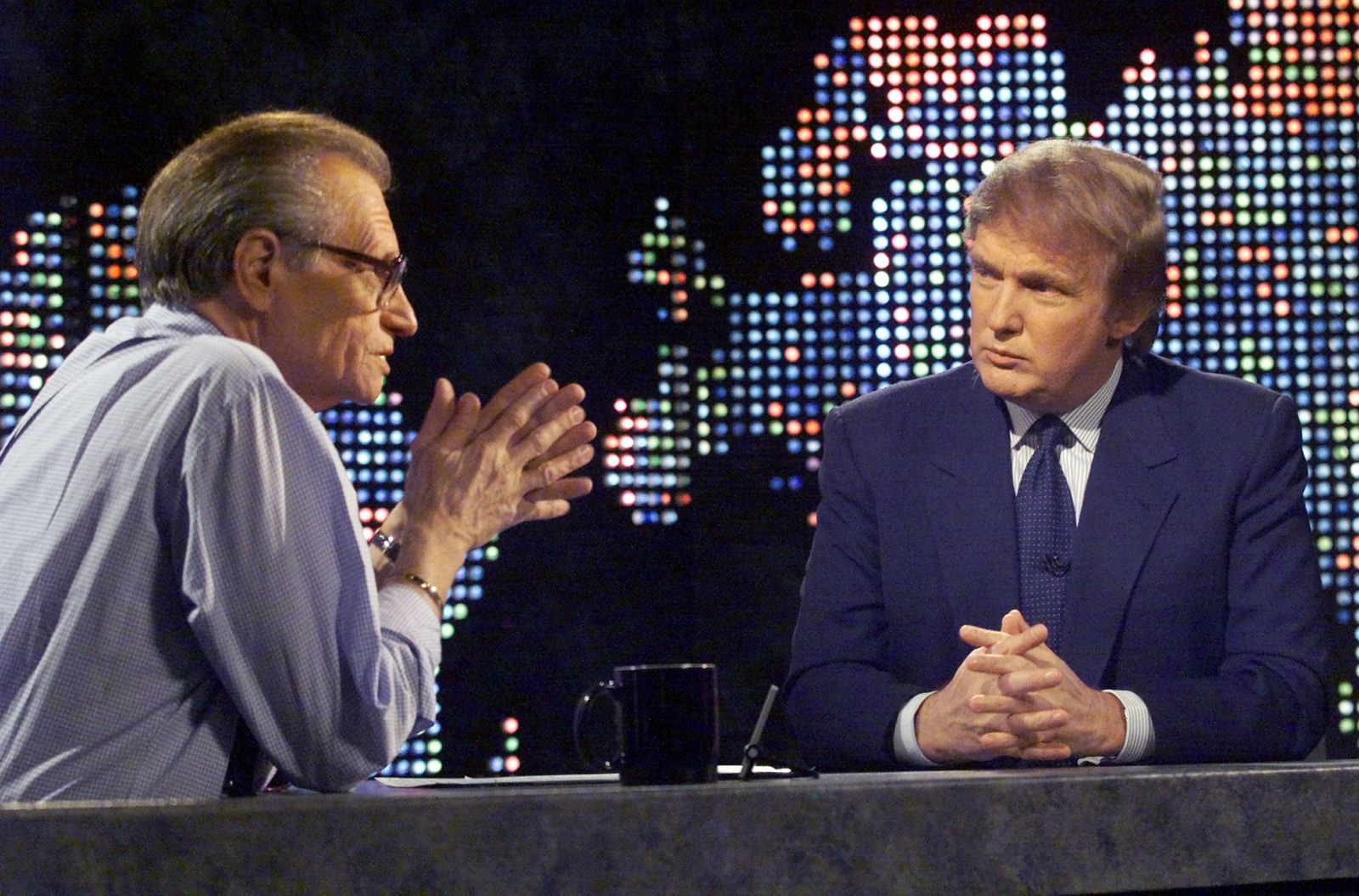
Yet those pieces, like so much vitriol directed toward celebrity culture and Trump’s 2016 campaign, failed to actually register why people were attracted to someone like Trump — or why political parties had resorted to rallying behind those candidates. There were exceptions: Presidential historian Michael Beschloss suggested in a New York Times op-ed that “by creating a system of front-loaded primaries to choose their nominees, the Democrats and Republicans unwittingly placed a high premium on exactly what many celebrities have: instant national name recognition, money (or access to it), and the ability to play to the camera.”
Beschloss also nailed why Trump’s message could resonate so powerfully, both then and now: direct messaging. “Mr. Trump does not need to pay court to today’s gatekeepers. He can go on Larry King Live and the Internet to reach exactly the voters who might find his candidacy appealing. Television and the Web have become the great equalizers between professional politicians and those famous people who think it might be cool to be president.”
Yet Beschloss still saw the volatility of the race as “a flukish moment.” In an eerily prescient response letter to the Times, Micah L. Sifry laid out the conditions that had made way for Trump’s potential rise:
It exists because of deep voter dissatisfaction with the major parties, disaffected citizens' new power to unite via the Internet and the television media's increased need to fill empty air time, giving third parties and unconventional candidates more attention than ever. These conditions can only intensify in the event of an economic downturn or foreign crisis.
Rather than evaporating, as Mr. Beschloss projects, the voters' demand for new leadership will grow. This may spell good news for one of the current crop of would-be insurgents or for candidates and/or parties still waiting on the sidelines today.
Sifry saw the blueprint. Whether or not Trump understood it as such simply doesn’t matter. What he understood — and what he continues to understand today — was how to offer new iterations of his established, and demonstrably compelling, image.
Trump did not, in other words, become a politician. He tried, only once, to speak like one, publishing a plodding editorial in the Wall Street Journal titled “America Needs a President Like Me,” declaring that he’d center his presidency around three principles: “one term, two-fisted policies, and no excuses.” And while the editorial included some policy points (refusing to allow Social Security funds to be invested in the stock market; extraditing and trying Fidel Castro for crimes against humanity; cutting “better deals” with trading partners), he also asserted that he was considering running simply to prevent Pat Buchanan from doing so — and decried the political status quo.
According to Trump, the initial silence from Elizabeth Dole and John McCain in response to Buchanan’s “repugnant” statements about World War II “underscores the central problem with contemporary politicians: They are so concerned with winning votes that they cannot even find it in themselves to immediately denounce a man who winks at barbarism.” Elsewhere, he called Buchanan a “Hitler lover,” and admitted, “I guess he’s an anti-Semite. He doesn’t like the blacks. He doesn’t like the gays.”
Trump defined himself then, as he did this past year, by criticizing others. The difference, of course, is that Trump himself has now become the winker. And he may have absorbed a useful lesson from Buchanan (who spoke positively about Trump’s 2016 campaign), in that Trump’s stated views in his recent campaign were less visibly extreme. Instead of saying that America shouldn’t have fought Hitler, he retweeted neo-Nazis and hesitated to decry former KKK leader David Duke; he wasn’t anti-gay himself, but he chose a running mate who was. He played to groups he needed to get elected, but always maintained plausible deniability himself.
Trump’s other major policy suggestion in 1999 was a publicity ploy: He proposed a onetime federal wealth tax of 14.25%, which he argued would result in a windfall of $5.7 trillion, allowing America to become “completely debt-free in the new millennium.” No matter that Congress would never pass it; it made Trump, who admitted that he himself would take a massive financial hit, seem beneficent. Other moves were more blatant celebrity image-making master craft: He declared that he would ask Oprah to become his running mate (“she’s great”). He became a TV pitchman for CompUSA, appearing in a commercial in which he hits on a young woman. He made a splashy exit from his “lifelong” membership in the GOP, lording it over Buchanan, who’d yet to formally exit for the Reform Party. “It’s always great to beat somebody to the punch,” he told the Washington Post.
Trump went on Howard Stern to say that when he walked into a restaurant with [then-girlfriend] Melania Knauss, “I watch grown men weep.” Knauss, whom Trump claimed was lying naked in bed beside him, told Stern on air that the couple had “incredible” sex several times a week. To our weary eyes, all of this reads as routine Trump. But at the time, it prompted real questions within the Reform Party, which was still struggling to be taken seriously.
Perot loyalist and Reform Party chairman Russ Verney declared that “the very first principle of the Reform Party is to set the highest ethical standards for the White House and Congress, not the most base, crass attempt to appeal to the lowest common denominator.” Other attempts to undercut Trump — including a prescient bit on The Smoking Gun about how little he actually gave to charity, a threat from Marla Maples to “tell all,” and a second Maureen Dowd editorial in which she wrote that Trump operates by an “ego arithmetic” — did little to actually delegitimize Trump in the eyes of his supporters.
By late November, Trump may have also known that the real point of his campaign was to keep interest piqued until the release of his book, which had been moved up to January 2000 in order to better capitalize on all the attention. He stopped offering anything resembling policy and moved into full culture-war outrage-stoking: He declared that he would cut all federal funding for “offensive or obscene” art, like the Brooklyn Museum’s recent display of a Madonna made of elephant dung. “It’s not art,” he told the Daily News. “It’s absolutely gross, degenerate stuff.”
Trump also began a 10-city tour of public appearances at seminars, hosted by self-help guru Anthony Robbins, for which he was paid $100,000. Trump, in other words, was getting paid to campaign. In Los Angeles for one of the events, which drew 17,000 people, he made an appearance on The Tonight Show, played onstage to the tune of “Hail to the Chief,” and stopped by the Museum of Tolerance, taking the opportunity to get in a dig at Pat Buchanan. “It would be a logical stop for Pat,” Trump said.
The New York Times began to question whether he was actually considering a candidacy or just providing publicity for his book. Trump “narrates his own voyage,” Adam Nagourney wrote, “often points out how much attention is being paid to him,” and failed to evidence even a basic understanding of how trade deals are made. “In arguably unusual behavior for a White House candidate,” Nagourney continues, “he remarks, while taking questions at the motivational conference, on the clothing and appearances of several women he calls on.” As it is today, however, it didn’t matter how the Times reported on Trump — so long as his followers devoured his schtick and the alternative it seemed to suggest.
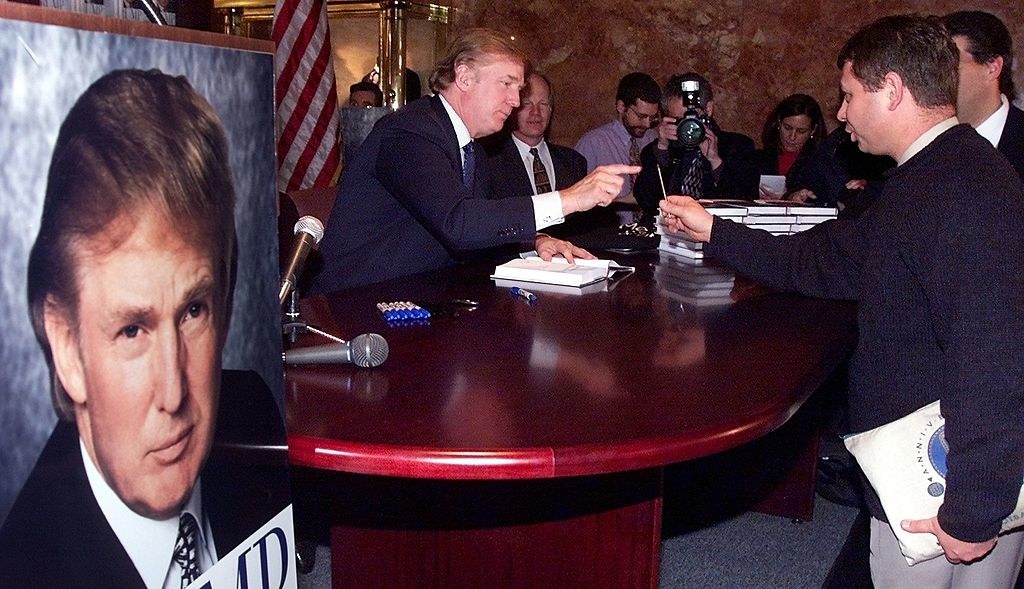
When Trump officially stated that he would not run, on Feb. 15, 2000, it was because he didn’t want to be a loser. “To win the presidency as a third-party candidate, all forces within the party would have to strongly pull together and be totally united,” he said in a public statement. “Sadly, this has not been the case.” The week before, Jesse Ventura had officially quit the Reform Party, whose national committee was reportedly “in chaos,” paving the way for a Buchanan nomination. Interim chair Pat Choate declared that Trump had “promoted himself at [the party’s] expense, and I think he understands fully that we’ve ended the possibilities for such abuse of our party.” In a New York Times editorial titled “What I Saw at the Revolution,” Trump defended his decision, writing, “I leave the Reform Party to David Duke, Pat Buchanan and Lenora Fulani. That is not company I wish to keep.”
Back in November, the Christian Science Monitor had reported that unnamed “New York City insiders” knew Trump wouldn’t actually go through with the run. “He is just conning the gullible inside-the-Beltway rubes,” the sources said, claiming that Trump wouldn’t be able to raise enough money for a legitimate run — and wasn’t “liquid enough” to pay for a campaign himself. And maybe that’s what made 1999 so remarkable: As Newsweek noted, there simply wasn’t enough anger in the country to propel an independent candidate.
To achieve that level of anger would take time and instigating factors: 9/11 and its reactionary, anti-Muslim aftermath, the instigation of the tea party and the anti-establishment impulse that followed, two failed wars, a wide-scale financial crisis, and a black president. It would take a deadlocked Congress and a frustrated electorate hungry for change, especially within the frazzled, fractured GOP. It would take accumulated distrust of a government that not only surveils its citizens, but entered into a massive, unending war on false pretenses. It would take growing fear of immigration, the failure to truly reform health care, the spread of questionable online news sources, and the continued rise of Fox News.
When Trump began considering a run again, the anger, animosity, and mistrust was there again — it just needed a spark, like Trump’s own suggestions about Obama’s birth certificate, to turn a smoldering fire into a conflagration. Trump exploited that dissatisfaction to demolish the GOP, outlasting and outplaying each of his primary competitors, and creating the one thing he didn’t have in 1999: a clear road to winning.
In 1999, Jonathan Chait wrote that “Trump’s candidacy is actually quite remarkable — it manages to embody all of populism’s bombastic ignorance without including any of its reformist impulses.” Trump figured out the formula, in other words, and bided his time for 14 years, fiddling with the specifics, upping the xenophobia and amplifying the misogyny, but mostly just continuing to reify his celebrity image as conditions became optimal for the formula’s execution.
During the height of the 2016 race, Hillary Clinton, speaking to an audience in Cleveland, quoted the poet Maya Angelou: “When somebody shows you who they are,” she said, referring to Donald Trump, “believe them, the first time.” The quote would become a catchphrase for the Clinton campaign and a well-traveled meme, but it was first uttered in 1997, on The Oprah Winfrey Show. Oprah had been telling Angelou about a failed relationship, and Angelou had told her to listen. As Oprah later recalled, “[Angelou] was saying to me, ‘Why are you blaming the other person? He showed you who he was.'”
Trump has told us who he is so many times. In 1999, he also clearly told us the sort of candidate he’d be — and, by extension, showed us the kind of criticism and media coverage that would prove ineffective against him. That so many Americans, including most of the news media, refused to see that, or believe it, until the very moment Trump won the election says less about him than it does about us — and what we overlooked in ourselves and in our country.
“I had enormous fun thinking about a presidential candidacy and count it as one of my great life experiences,” Trump wrote in 2000, just after explaining his reasons for removing himself from the race. “Although I must admit that it still doesn’t compare with completing one of the great skyscrapers of Manhattan, I cannot rule out another bid for the presidency in 2004.”
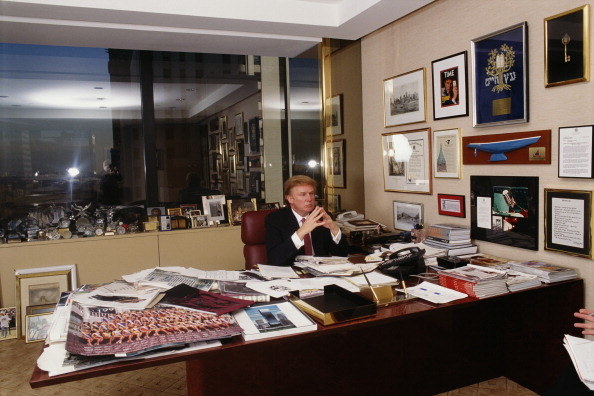

This is part of a series of essays on the year 1999; you can check out the other stories here.
Want more of the best in cultural criticism, literary arts, and personal essays? Sign up for BuzzFeed Reader’s newsletter!
If you can't see the signup box above, just go here to sign up for BuzzFeed Reader's newsletter!
